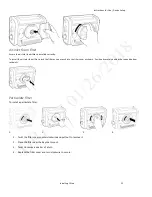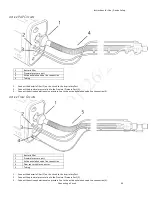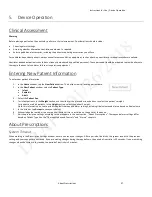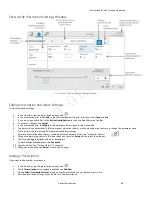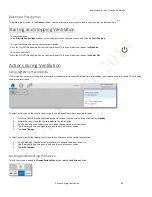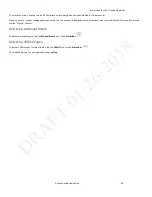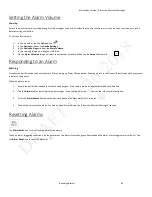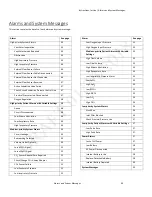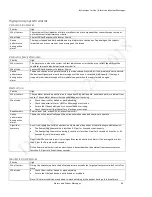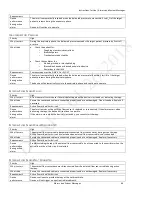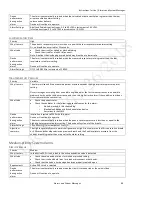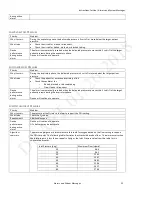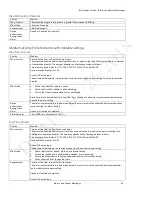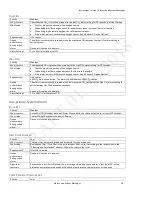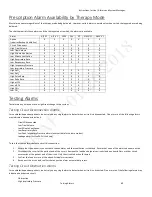
Instructions for Use | Alarms and System Messages
Alarms and System Messages
45
High-priority System Alarms
V
ENTILATOR
I
NOPERATIVE
Priority
High
Why it occurs
The system self-test indicates a failure or malfunction of a component that causes therapy to stop or
not meet essential performance criteria.
What to do
Contact Philips Respironics Customer Service
Device
performance
during active
alarm
Therapy is stopped and both audible and visual alarms are continuous. Depending on the systems
impacted, you may or may not see a message on the screen.
V
ENTILATOR
S
ERVICE
R
EQUIRED
Priority
High
Why it occurs
This alarm occurs when the system self-test indicates an error that does not affect the ability of the
ventilator to meet essential performance criteria.
What to do
Contact Philips Respironics Customer Service
Device
performance
during active
alarm
The device
continues to operate (possibly in a reduced capacity mode). If the problem is not corrected,
the device will generate a reminder message until the issue is corrected. Additionally, if therapy is
stopped, a reminder message will immediately appear when therapy is turned on again.
O
BSTRUCTION
Priority
High
Why it occurs
The ventilator detects an obstruction in the patient’s inhalation path, exhalation path, or external flow
sensor. The ventilator detects that the exhalation port is missing.
What to do
•
Check the circuit for kinked or pinched tubing.
•
Check the bacteria filter or HME for a blockage or occlusion.
•
Ensure that the exhalation port is not occluded or missing.
•
Check the external flow sensor for a blockage or occlusion.
Requirements
Passive, dual limb, active PAP, or active flow circuit
Device
performance
during active
alarm
The device will automatically open the active exhalation valve and continue to operate.
Algorithm
summary
Any circuit, inhalation limb: an obstruction is detected when either of the following conditions exist:
•
The flow exiting the machine is less than 0.5 lpm for 5 seconds continuously
•
The flow exiting the machine during inspiration is less than 1 lpm for 5 seconds, 2 breaths, or 65
seconds for very low breath rates.
Any circuit: The expiratory port is missing and causes an obstruction alarm if the average flow is less
than 1 lpm for 2 breaths or 60 seconds.
Active flow or dual limb circuit: an obstruction is detected when the external flow sensor measures
less than 0.5 lpm for 65 continuous seconds.
H
IGH
E
XPIRATORY
P
RESSURE
Priority
High
Why it occurs
During the expiratory phase, the delivered pressure exceeds the target patient pressure by 5 cmH
2
O or
more.
What to do
•
Check the circuit for kinked or pinched tubing.
•
Ensure that the leak device is not blocked or occluded.
Note: This alarm condition may be due to pinched tubing or the patient having a fast breath rate.


